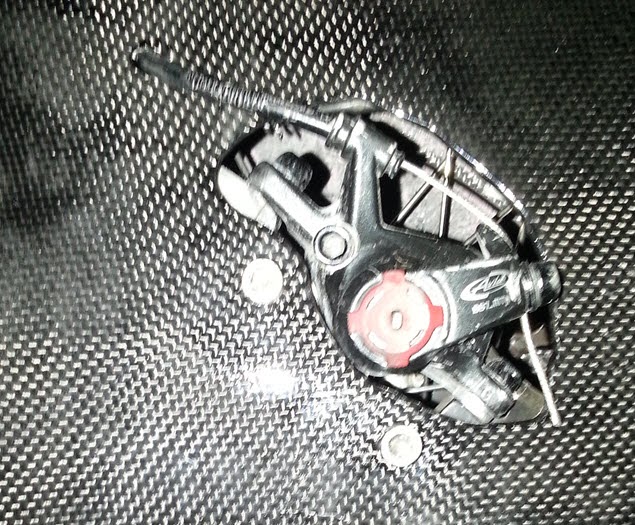The side effect of me now having a much better handcycle,
aerodynamically speaking, is that I have new questions:
- What should I expect for average speed given stop signs and wind for a given route?
- If I expend a given wattage of work (let’s say a constant 125 watts) over a route with a zero wind speed, what should I expect for bike speed if the wind is xx miles per hour ?
- What happens to speed when I add stop signs to a route?
- If I know my bike’s aerodynamic coefficient, the wind speed, and the number of stop signs for a give GPX route, can I calculate my average wattage?
One reason I want this information is, I am thinking about
doing the 24hr Sebring. I have completed
the 12 hour Calvin’s Challenge for which I rode 193.5 miles at 16.4 mph average
(with an aerodynamically awful bike).
The handcycling WR for 24 hour is 403 miles at just under 17 mph
average. The Sebring course is VERY flat
whereas the Calvin’s Challenge is far from flat. So an enhance bike calculator can show me the
expected difference.
I could not find a cycling calculator that answers the above
questions given a GPX route – so I
wrote my own. This calculator takes a
GPX route and does all the hard math along the many waypoints. Most of the GPX routes (like those from
MapMyRide or RideWithGPS), show a latitude/longitude/elevation for every 10
meters or so along the route. With the
lat/long/elev, one can then calculate the distance and slope from waypoint to waypoint. With a known wind speed and wind direction,
and the above information, one can then calculate the average speed for the
route for a given constant energy (wattage) output.
With all the waypoint-to-waypoint and wind information, the
calculations become “interesting.” Let’s
say from one waypoint to the next waypoint, there is an upward slope. In order
to maintain the constant wattage (again for this example – 125 watts), the
cyclist is going to slow due to the climb.
But when the cyclist then moves on to the next waypoint that is for this
example, flat, the cyclist speeds up.
But the acceleration from one speed to another requires work. That work might
limit the speed in order to maintain a constant 125 watts. Also, the rolling resistance will increase or
decrease with speed. All of this can be
calculated.
Acceleration and speed are manipulated all along the route
in order to maintain a constant 125 watts of power.
With my calculator, one can also throw in any number of stop
signs for the route. For each stop sign,
the cyclist is slowed to 0 mph and then then cyclist must accelerate up to 125
watts. The average speed drops at the
stop and then moves up during acceleration. The slope may help (or hinder)
acceleration.
All of the above calculations take into account the wind
direction, cyclist/bike weight, rolling resistance and drive-train
efficiency.
So what is the result?
For my bike, I found that the aerodynamics is so good, that in order to
improve the performance of the bike, the bike must lose weight! I am 6”-3” and 190 lbs. I can lose a few more pounds – but not many. As well, relative to handcycling, the amputee
handcyclist is always going to beat the legged one – unless the amputee is
really fat – given that everything else is equal.
Here is the result for standard workout without wind and
without stop signs.
If I add the 15 stop signs:
What if I use the same input data applied to the Sebring 3.6
mile course with zero elevation change:
So, as you can see from the above, I “should” be able to go
about a 1.66 MPH faster on the Sebring track with the same effort as my nightly
workout. Of course I do not expect to
average 19 MPH. So what do can I expect
for average output if I were to maintain 17.4 MPH on the Sebring track?
If I were to change the front fork on my bike in order to accommodate
a regular derailleur (I have a heavy I-Motion 9 transmission now), I will drag
around far less weight. Currently, I use
the transmission so that I can shift down at a stop sign. I have over-stressed my shoulders to many
times by getting caught in the wrong gear at a stop with fast cross traffic. But I should not have that problem on the
Sebring track. Here is the calculations
with less weight:
As you can see, the weight difference (10 lbs) allows me to
go about a ½ MPH faster (or use less energy) on the Sebring track. That is a huge change! Anyone that has done long distance events,
know the difficulty of gaining just a tenth of a MPH increase over many hours.























